bile “duck tractor” on wheels—building a safe, dry duck house doesn’t have to be dull or expensive. Across all good designs you’ll spot a handful of golden rules: give each duck at least 4 sq ft of floor space, keep bedding dry with ample ventilation, block every ½-inch gap against prowling predators, and plan for cleaning that won’t break your back. Backyard Chickens With those basics in mind, the 20 ideas below walk you from simple pallet builds to solar-powered smart huts, so you can match the project to your climate, budget, and flock size.
1. Raised Platform Duck House Beats Damp Ground

A solid deck a foot off the soil shields birds from rising moisture, snow melt, and burrowing pests. By lifting the floor, you cut rot risk, improve airflow under the structure, and create shade the flock can nap beneath on hot days. Use treated 4×4 posts or stacked concrete blocks at the corners, then panel the floor with exterior plywood sealed with low-VOC paint. Keep ramp angles gentle—under 30°—so webbed feet grip safely. Owners in cold zones report that raising the coop plus adding straw bedding keeps interiors 5-10 °F warmer overnight. Attainable Sustainable® Backyard Chickens
2. Predator-Proof Duck House With Full Hardware-Cloth Armor
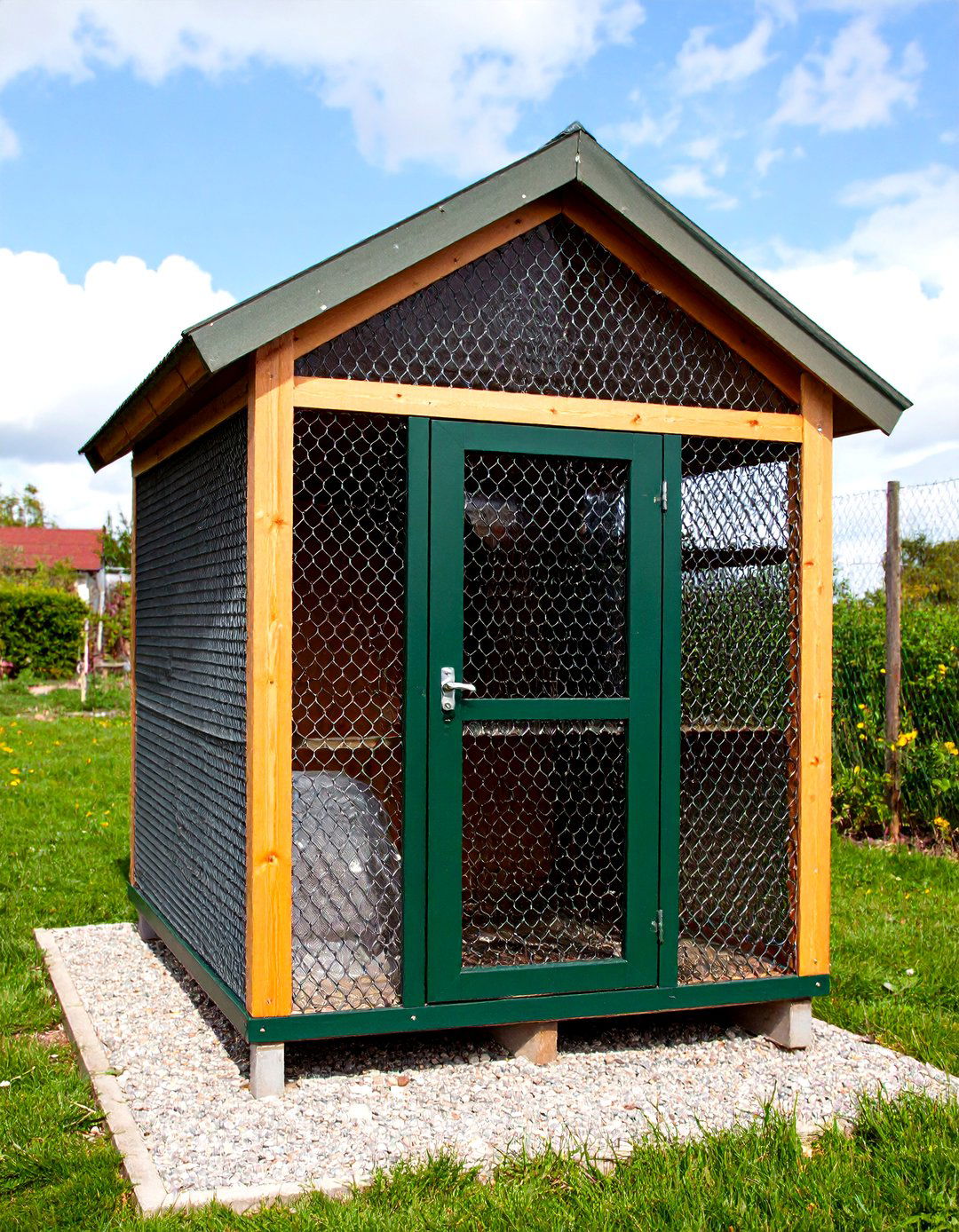
Hardware cloth (½-inch welded wire) is your single best investment for deterring raccoons, foxes, mink, and rats; chicken wire alone won’t cut it. Wrap every wall opening—including soffit vents—and add a 12-inch skirt of the same mesh laid flat at ground level to stop diggers. Inside doors, mount sturdy barrel locks that require two motions to open; raccoons can flip a simple latch. Keep door gaps under ¼ inch and install plexiglass windows with metal screens outside them for light without vulnerability. Flock keepers who upgraded to full hardware cloth reported zero night losses over two years. Backyard Chickens Reddit
3. Mobile Duck-Tractor House for Easy Grazing
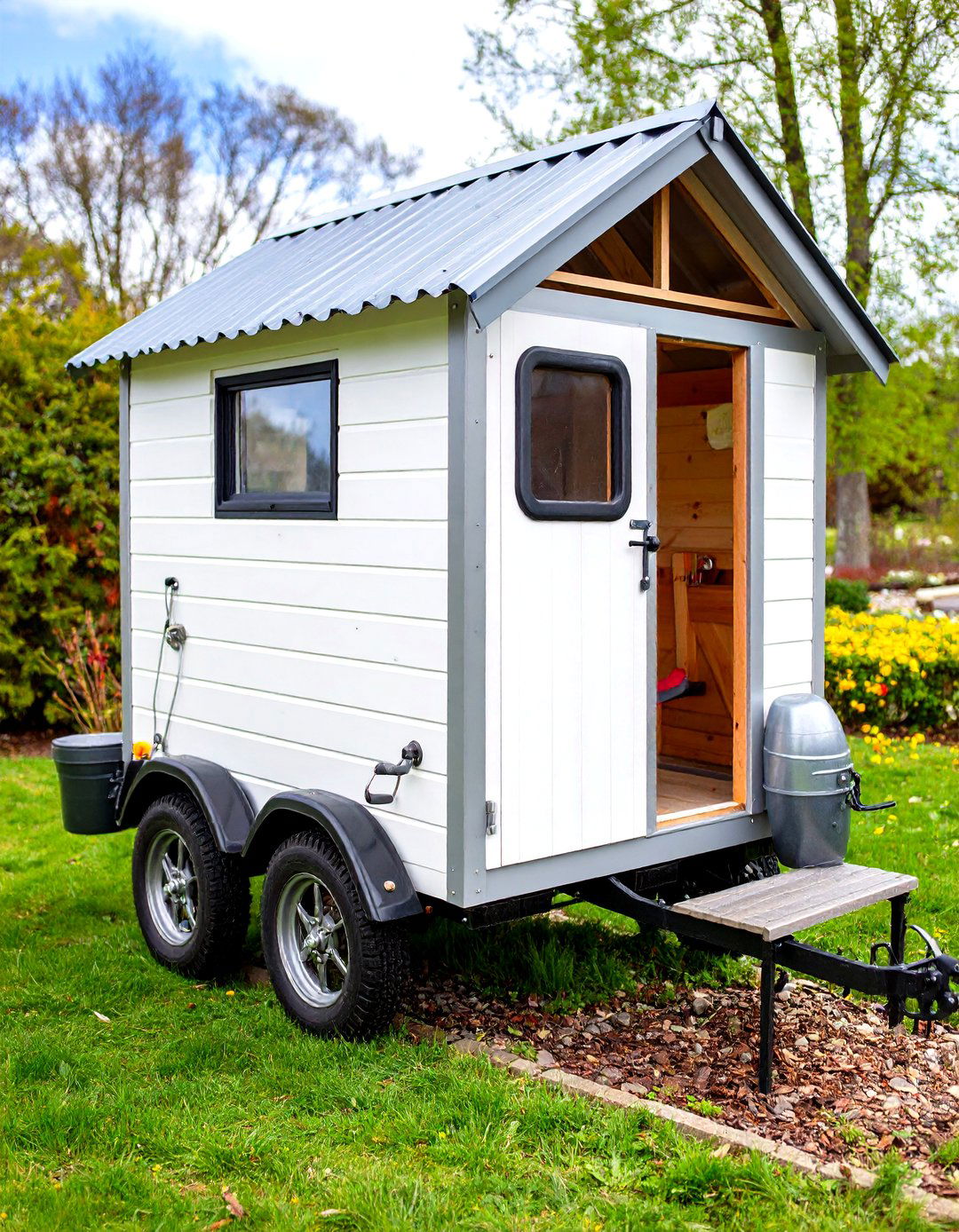
Mounting a compact duck house on lawn-tractor wheels lets you roll the flock to fresh grass daily, reducing odor and parasite load while fertilizing the yard in neat grids. Aim for a footprint of 4 × 8 ft to house six ducks comfortably, and keep the height low to stop tips in wind. Lightweight corrugated roofing and diagonal bracing maintain rigidity without excess weight. Attach quick-release water buckets so nothing spills while moving. Enthusiasts using mobile coops say pasture stays greener and mud buildup disappears within a week of rotation. Happy Farmer
4. Floating Duck House Adds Pond-Side Security
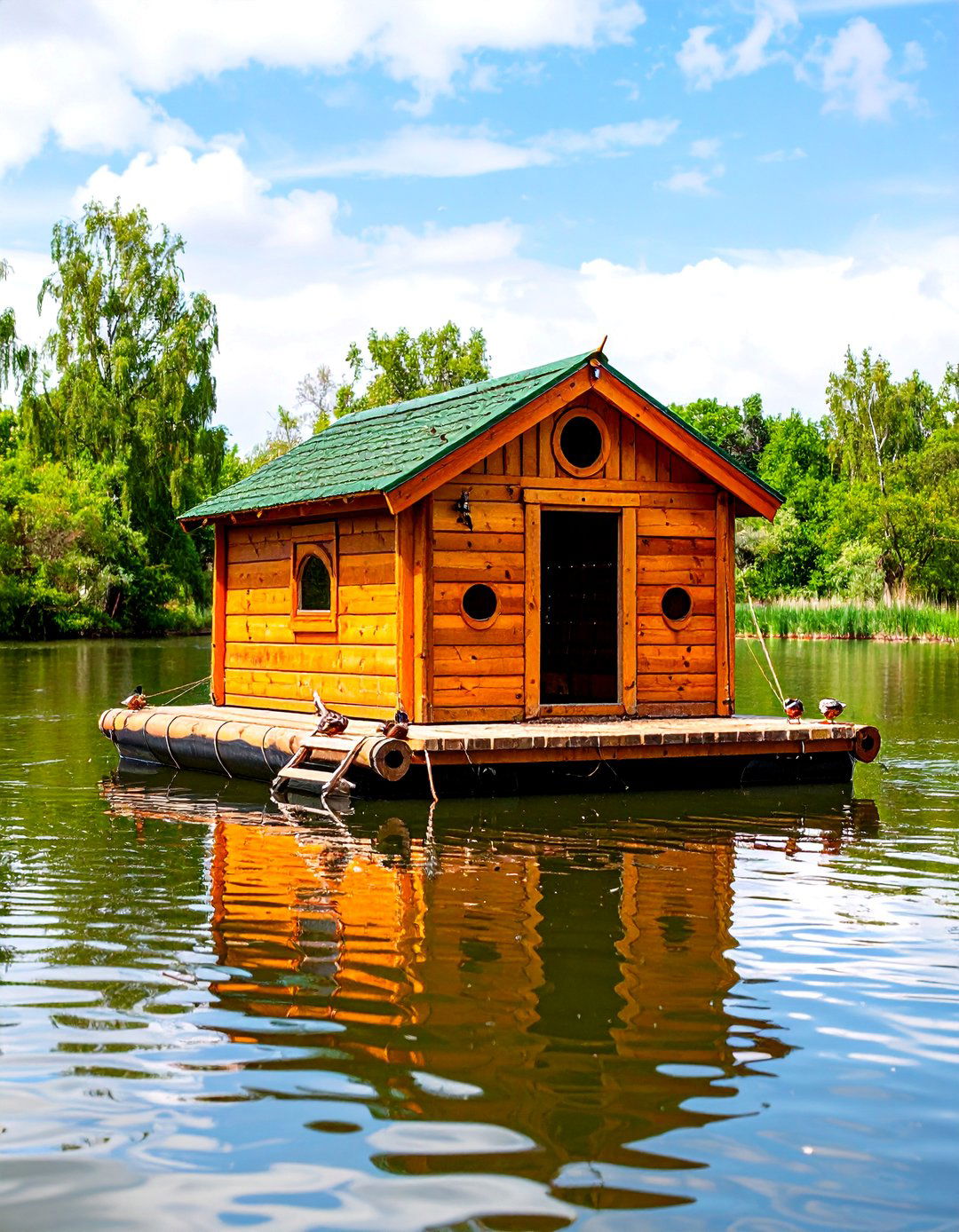
A raft-based shelter, anchored with marine rope, keeps ducks safe from land predators and doubles as a tranquil nesting spot. Use cedar decking atop sealed 55-gallon barrels or capped PVC pontoons for buoyancy, then fasten a lightweight weather-board house to the platform. Provide a non-slip ramp rising no steeper than 20°. Builders of foam-supported rafts note four medium ducks ride comfortably on a 4 × 6 ft float with five barrels. Backyard Chickens TractorByNet
5. Straw-Insulated Duck House for Harsh Winters

Straw’s hollow stems trap warm air, creating a natural insulative layer that costs pennies. Line walls with straw bales or stuff loose straw between double studs, then add a deep 8-inch straw floor that you top up weekly—known as the “deep-litter” method. Temperatures inside straw-lined houses in Minnesota tests ran 8–12 °F warmer than ambient during single-digit nights, all without electricity. Important: keep vents open high under the eaves so moist air can escape and straw stays dry. Backyard Poultry Attainable Sustainable®
6. Open-Air, Highly Ventilated Duck House for Humid Climates
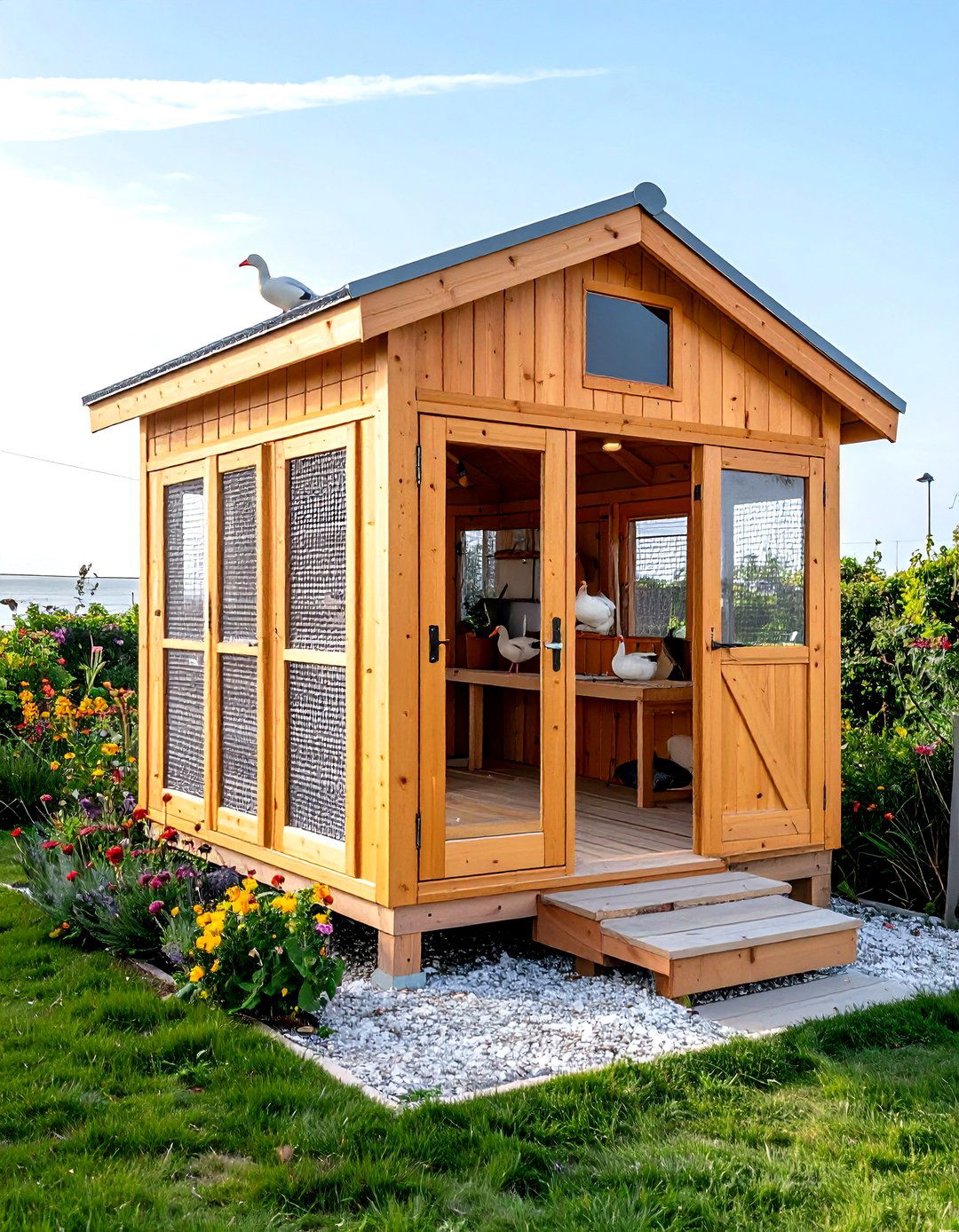
Ducks create humidity and ammonia; an open-front or three-sided shelter with hardware-cloth panels up top vents it fast. Best practice is at least 1 sq ft of ventilation per bird situated above head height to avoid drafts. Studies show ammonia should stay below 20 ppm for healthy lungs—ample airflow plus dry bedding hits that target. Owners in gulf-coast regions report mold-free litter and sharper egg quality once they enlarged vents across the gable ends.
7. Pallet-Wood Duck House on a Shoestring Budget
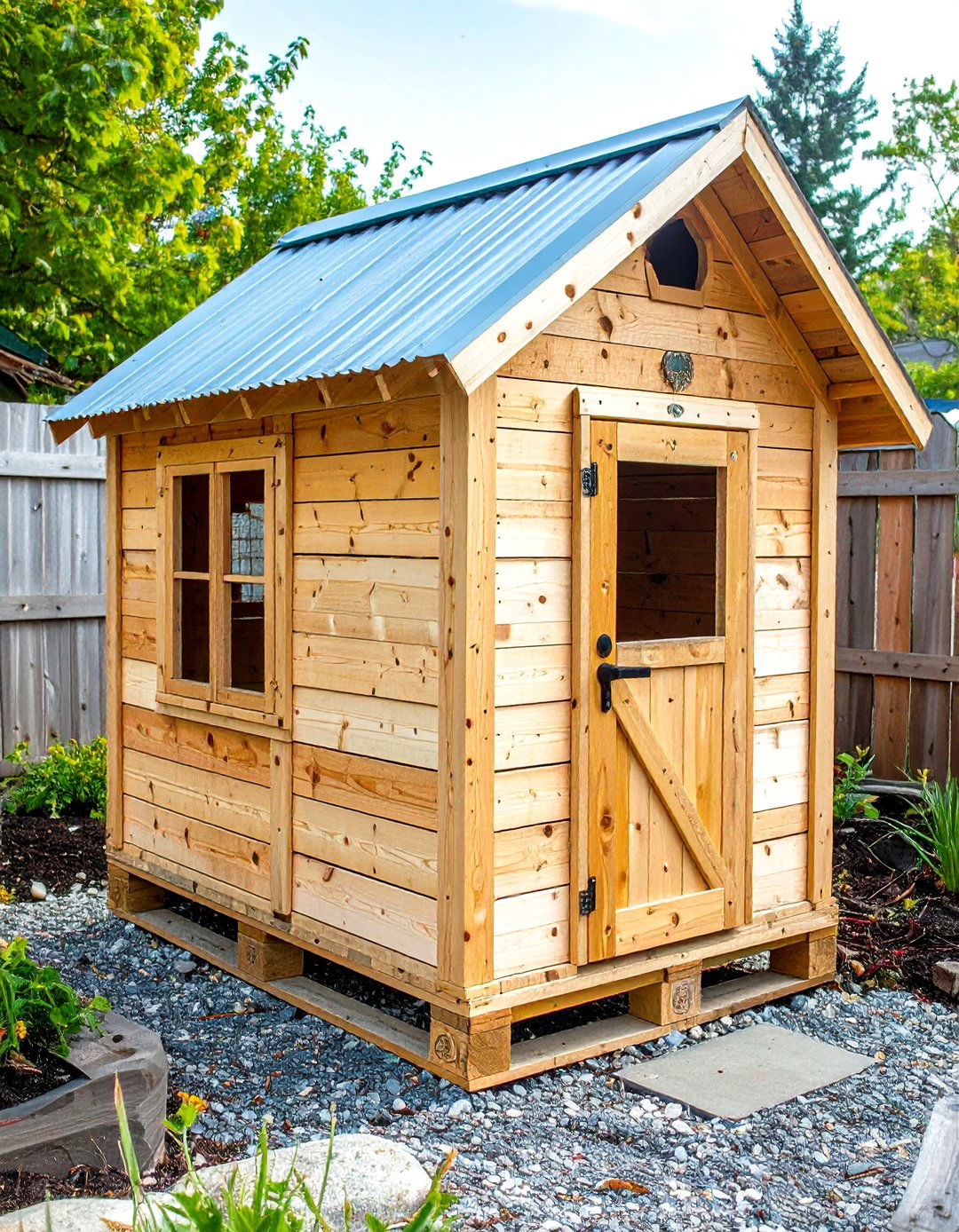
Free pallets become sturdy walls when disassembled and re-screwed onto a simple 2×4 frame. Select heat-treated (HT) pallets, sand rough edges, and seal with linseed oil for weather resistance. One DIYer built a 5 × 4 ft pallet house for under $30, buying only hinges, screws, and hardware cloth. Set the pallet floor on bricks to prevent wicking moisture, and cap the roof with reclaimed metal sheets for longevity. Community feedback highlights that pallet siding lasts 5–7 years before boards need replacing—still a bargain build. Reddit
8. Duck House Roof With Rainwater-Catch Barrel
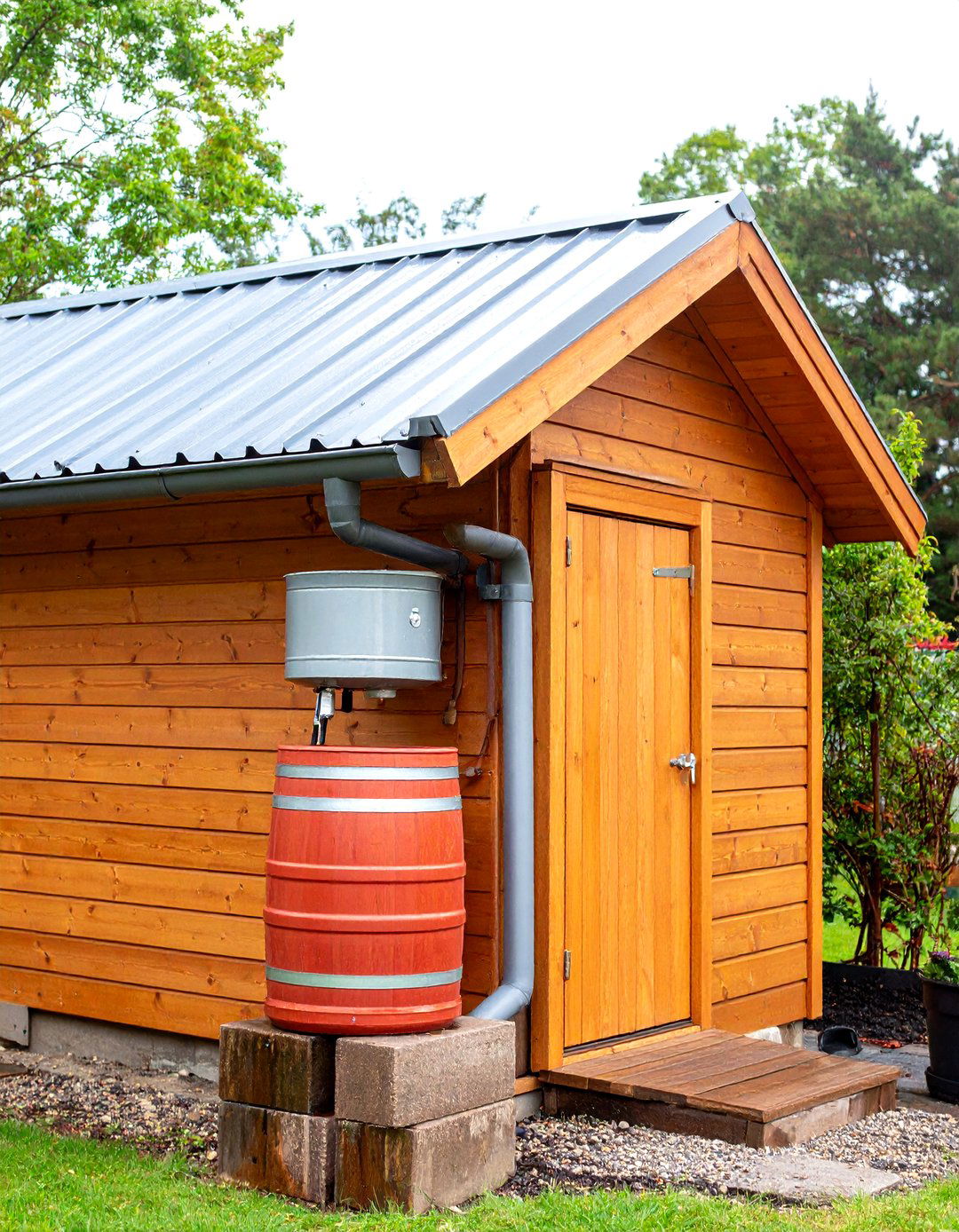
Fitting a shallow-slope metal roof with gutters that feed a 50-gallon barrel supplies free wash water for pools and gardens. Install a leaf screen at the downspout and place the barrel on cinder blocks for gravity flow into poultry water cups. Keep algae down by painting the barrel opaque or dropping in a barley-straw puck. Backyard keepers using gutter-to-barrel rigs report filling a kiddie pool every three days in rainy seasons without tapping the hose. Backyard Chickens The Intrepid Homestead
9. Duck House With Covered Porch and Run for Stormy Regions
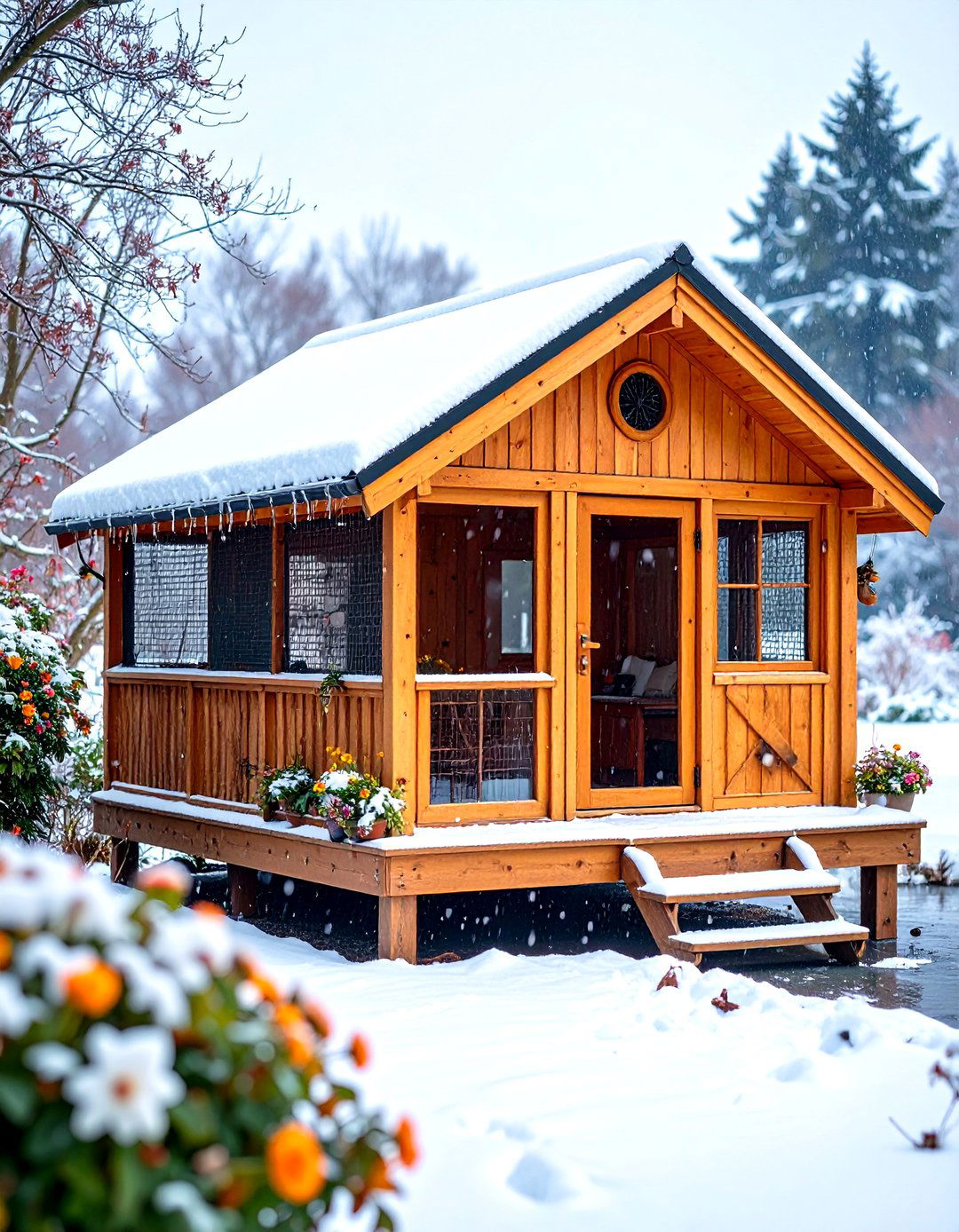
Adding a 3-ft-deep roofed veranda in front of the pop-door gives ducks a dry “patio” to preen and shake off before bedding, keeping litter cleaner. Frame the porch with 2×2s, roof with corrugated plastic, and enclose sides in hardware cloth so breezes still flow. When paired with a fully-roofed run, owners in snowy climates note drastically less ice buildup and easier maintenance after blizzards.
10. Up-cycled Doghouse Converted to Duck House
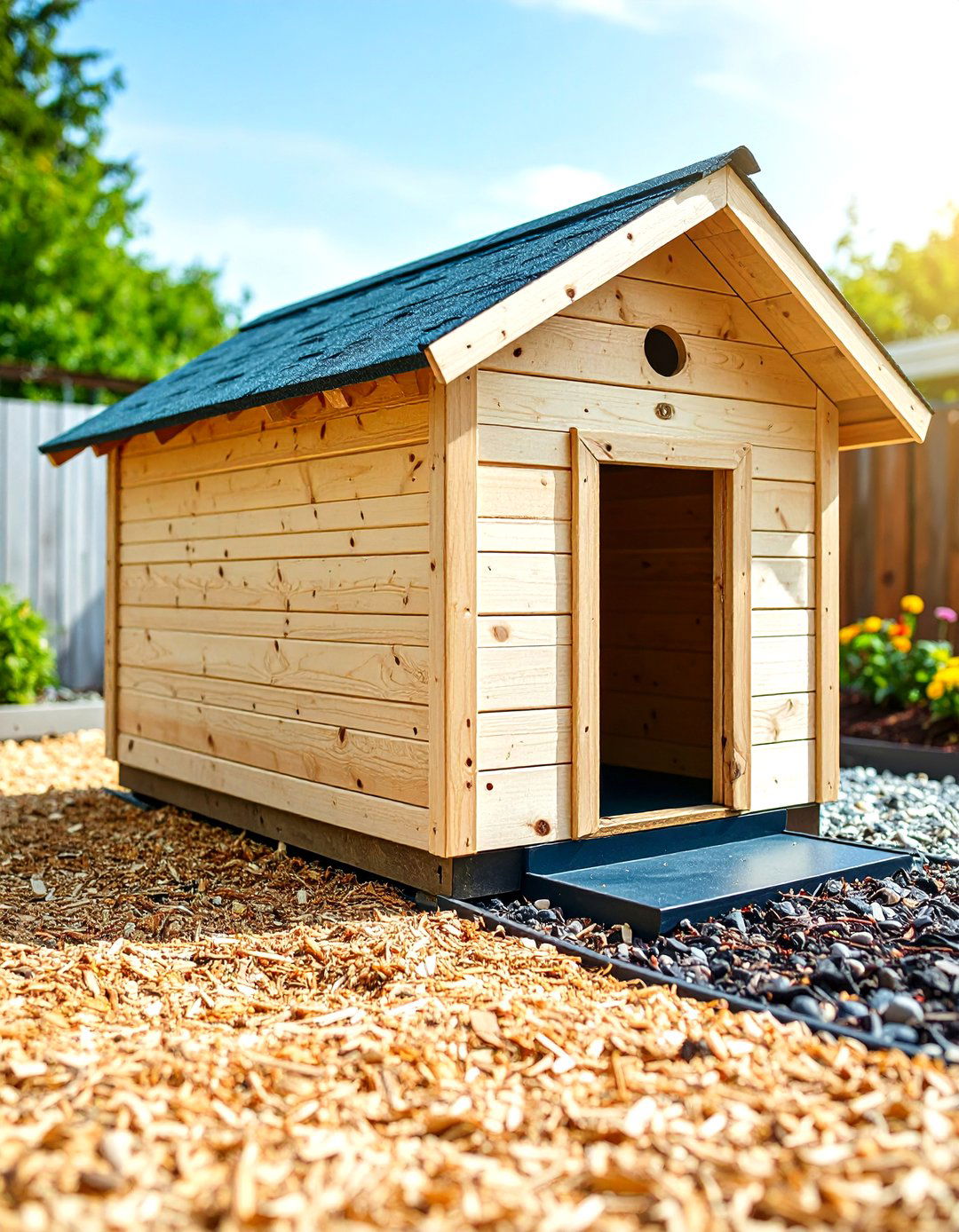
An old wooden dog kennel—at least 3 ft tall—can transform into a perfect single-pair duck shelter. Widen the doorway to 12 × 14 inches, hinge the roof for cleaning, and add vents under the eaves. Line the floor with vinyl off-cut topped by pine shavings for water resistance. Builders who repurposed doghouses say the project finishes in an afternoon and costs little beyond mesh and latches. The Cape Coop
11. Duck House With Hinged Roof for Five-Minute Clean-Outs
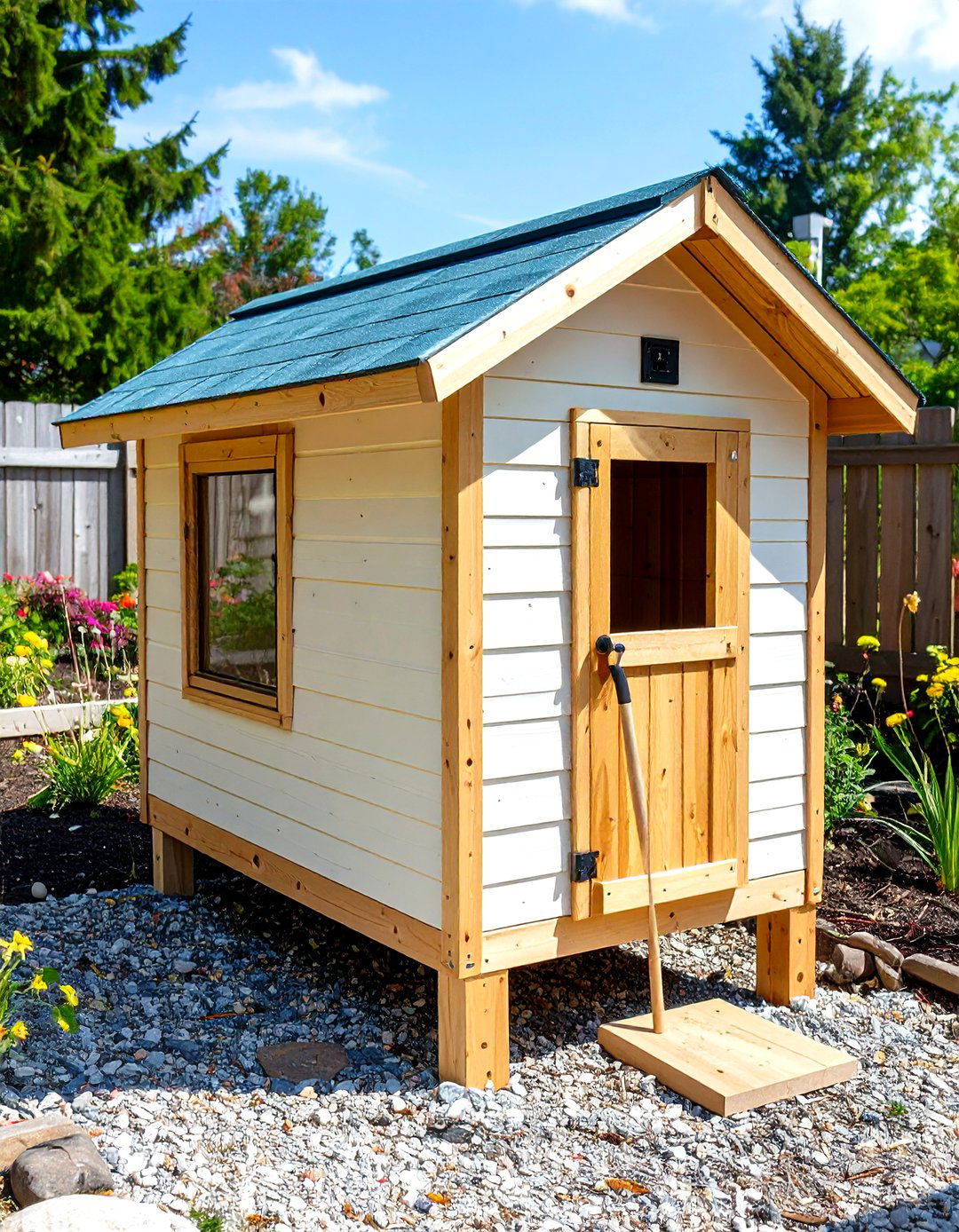
Nothing shortens chore time like a full-width, hinged roof panel—use exterior-grade piano hinges and a prop stick for safety. Pressure-wash flooring or scoop litter straight into a wheelbarrow without crawling inside. Owners who upgraded to lift-up roofs cut weekly cleaning from 25 minutes to under 10 and reduced lingering ammonia odors. Backyard Chickens
12. Deep-Litter Duck House Floor for Low-Maintenance Warmth
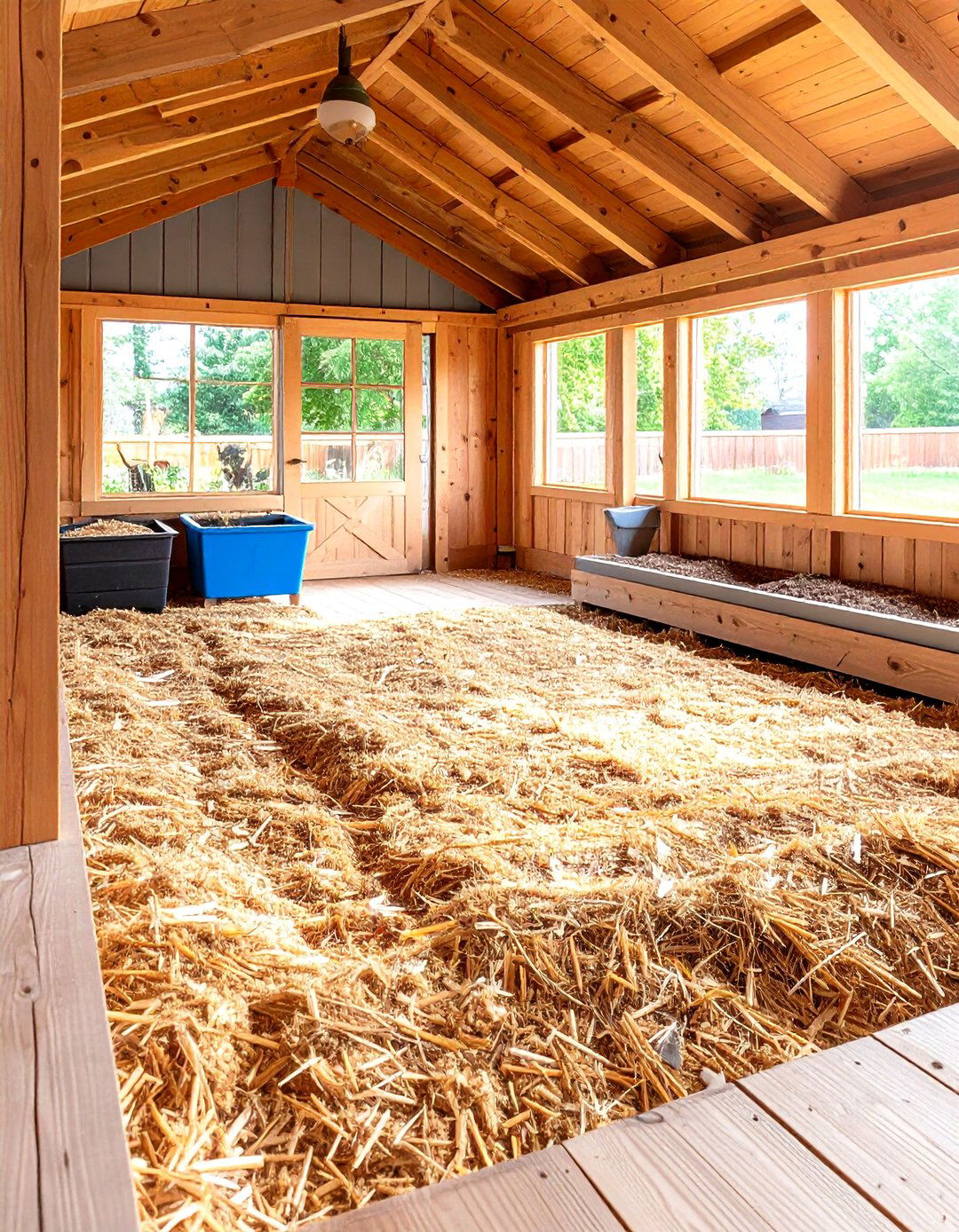
Layer 3 inches of pine shavings, top with straw, and add fresh material weekly; microbes compost droppings underneath, generating gentle heat. Stir layers monthly and remove the lot twice a year for garden mulch. The method works best with drains or a sloped floor so excess spray-water runs out. Flock owners using deep litter report warmer winter floors and rich compost without daily muck-outs. Backyard Chickens Backyard Chickens
13. Earth-Bermed Duck House for Year-Round Temperature Stability
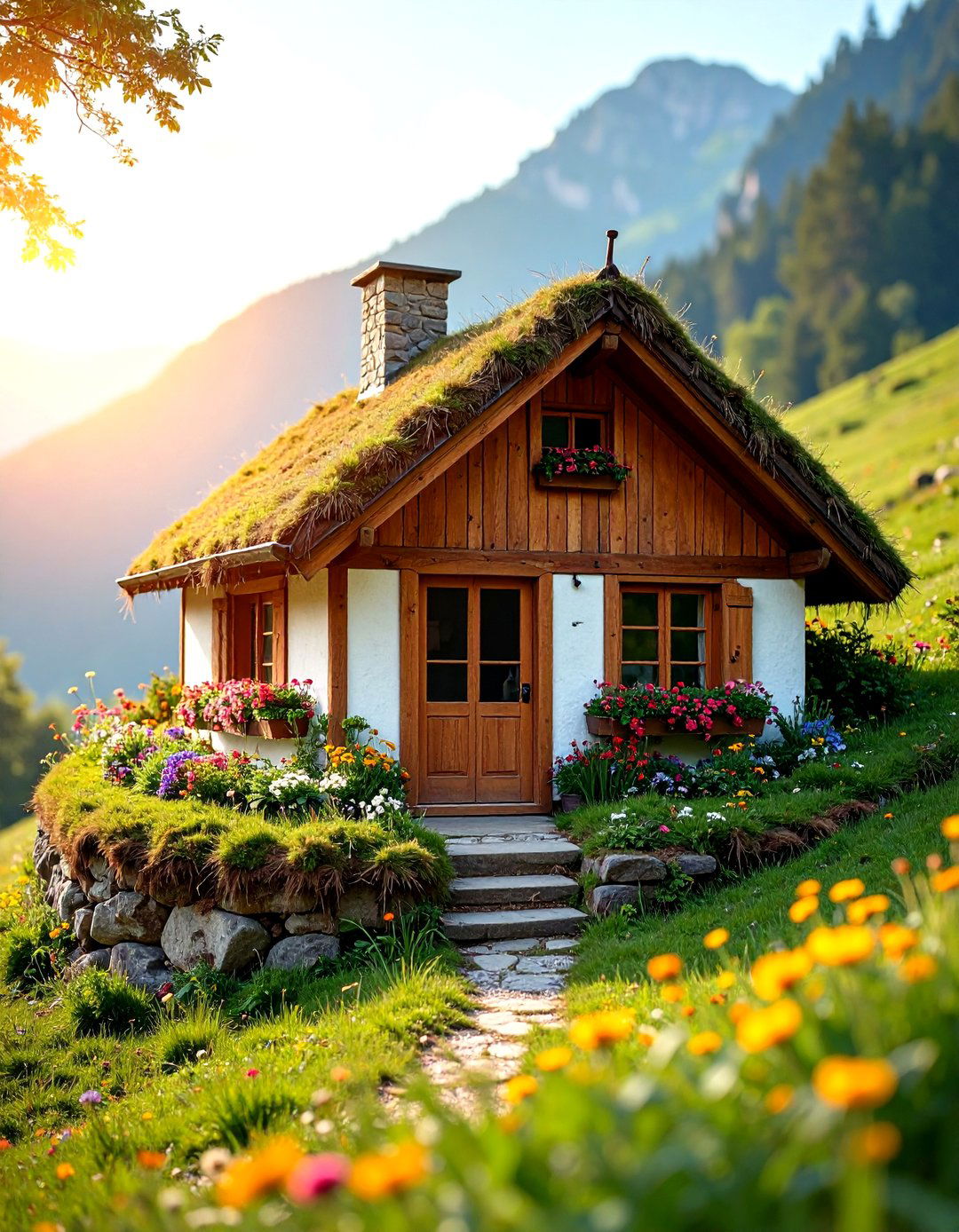
Digging the rear wall into a south-facing hillside—or piling straw bales and soil against it—buffers extremes, keeping interiors cooler in summer and milder in winter. Add a moisture barrier on earth-touching wood and extend roof eaves to divert runoff. Homesteaders with bermed coops in Vermont observed internal temps hover near 50 °F when outside hit single digits, cutting feed use and frost risk. Permies
14. Solar-Powered Duck House With Automatic Door
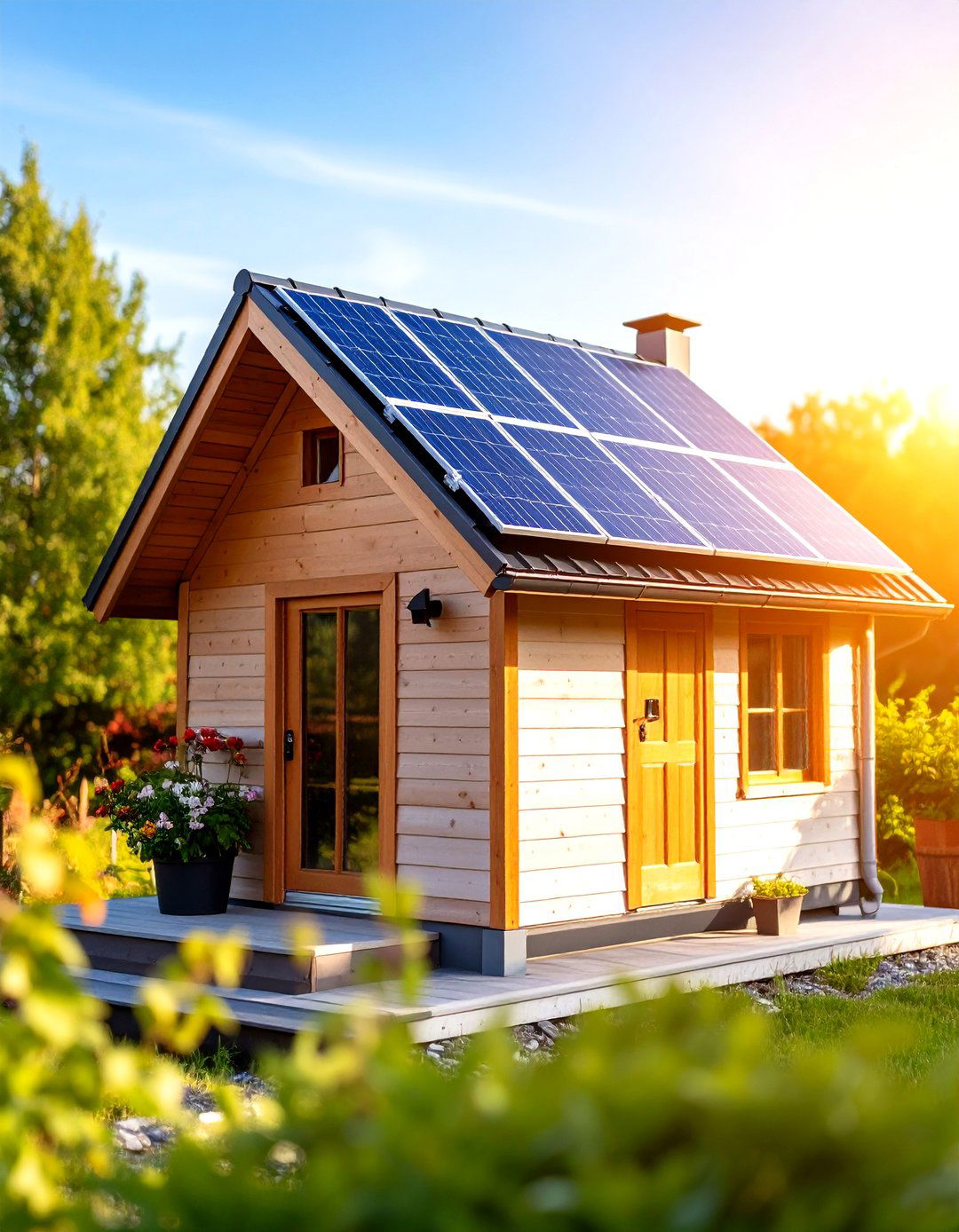
Attach a small 10 W panel to the roof, wired to a battery-backed, light-sensor door kit rated for ducks’ wider frames. Doors close at dusk, open at dawn, saving late-night trips while sealing the flock safely. Aluminum models withstand snow loads and resist rust; long-term users on farm forums report flawless cycling through −20 °F winters after three years of operation. Backyard Chickens
15. Duck House Wall of Nest Boxes With Outside Egg Access
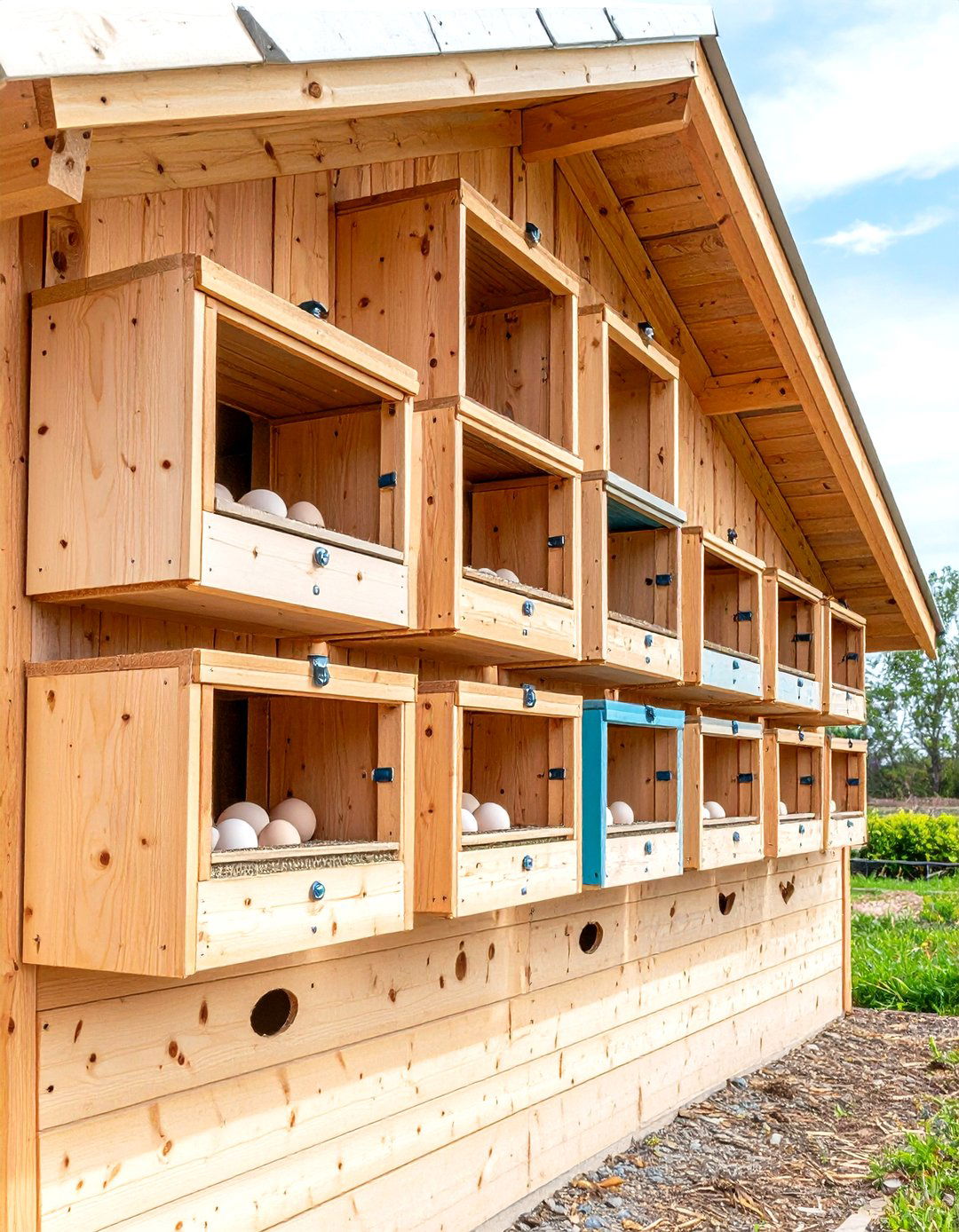
Mount 18 × 18 × 18-inch nest cubes along one wall and hinge the exterior backs so you can gather eggs without entering. Ducks prefer dim, private boxes lined with 4 inches of straw. Keep entry holes low—5 inches above floor—since ducks don’t jump like hens. Farms adopting dedicated duck-sized nests saw cleaner eggs and fewer cracked shells. The Cape Coop
16. Sloped-Floor Duck House With Central Drain Channel
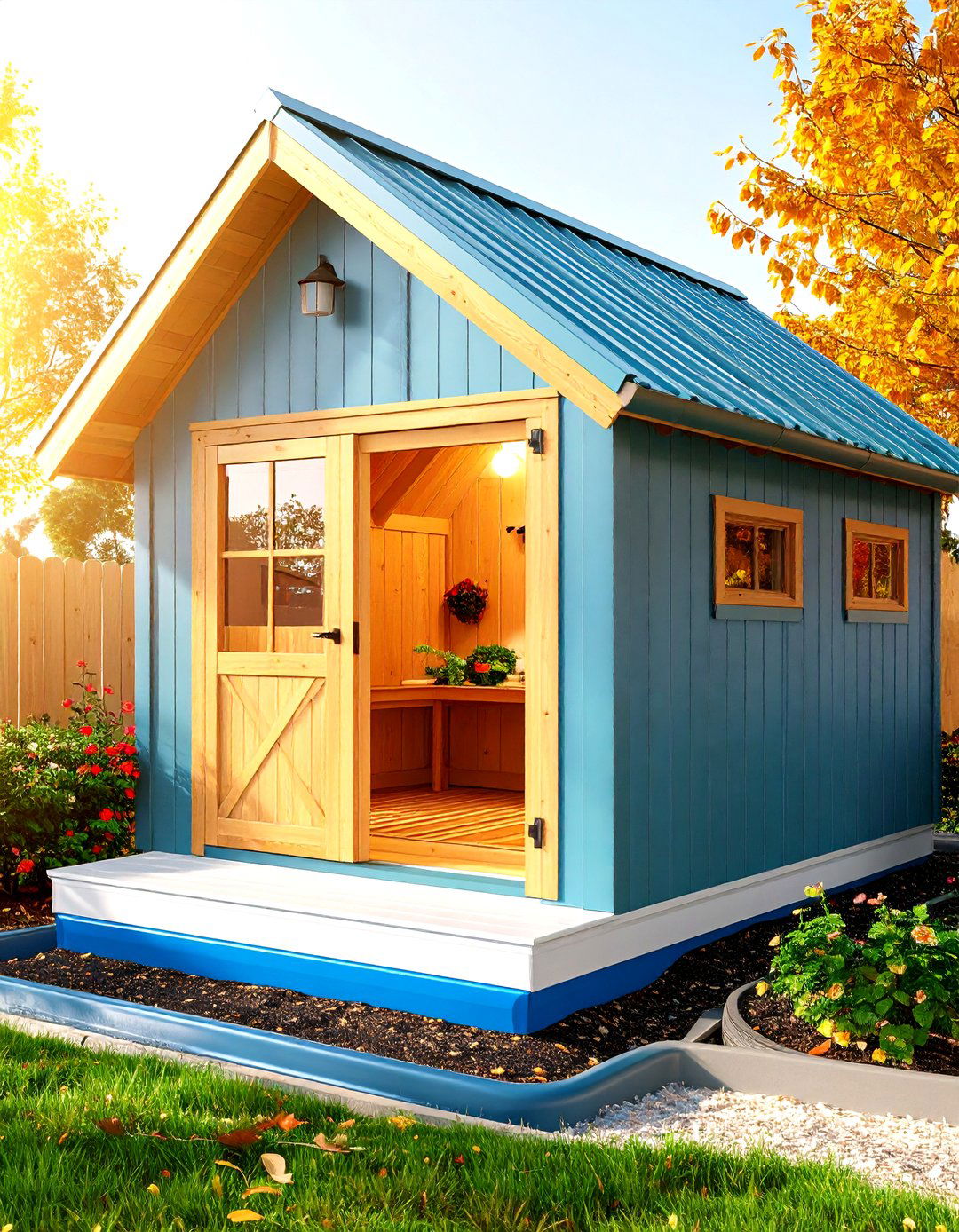
A ½-inch-per-foot slope toward a capped PVC trench makes daily hose-out fast; remove the plug and gray water exits to a gravel soak pit. Pair this with waterproof vinyl flooring to prevent rot. Keep the channel screened so dropped feed doesn’t clog pipes. Owners using sloped floors say they blast droppings away in under two minutes each morning, extending bedding life. Backyard Chickens
17. A-Frame Duck House for Quick, Lightweight Builds

The classic triangle uses two identical wall panels hinged at the roof peak, creating a self-supporting shape that sheds snow effortlessly. A 4 × 6 ft A-frame elevated 6 inches suits up to six ducks while weighing under 120 lb, easy to move with two people. One side panel can swing upward as a clean-out door. DIYers praise the design for taking a weekend to build with limited tools. Backyard Chickens
18. Extra-Roomy Duck House for Large Breeds Like Pekins
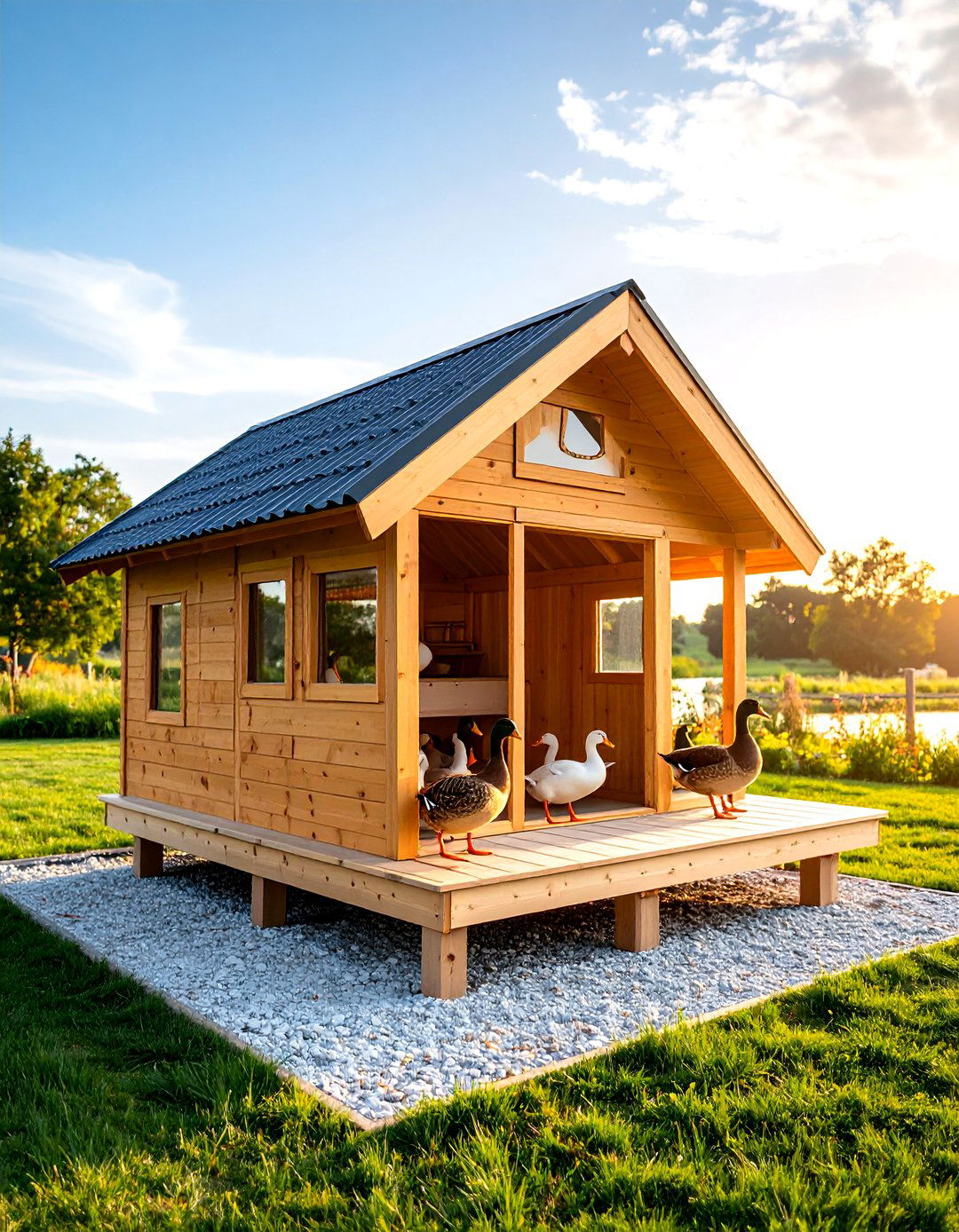
Heavier breeds need more elbow room—plan 5 sq ft per bird and door openings at least 14 inches square. Interior height around 3 ft lets tall drakes stretch to full posture without hitting ceilings. Use 2×4 studs on 16-inch centers for added rigidity to support their greater weight against walls. Keep pop-door sills flush to floor to avoid leg strain stepping over.
19. Green-Roof Duck House Adds Insulation and Pollinator Habitat
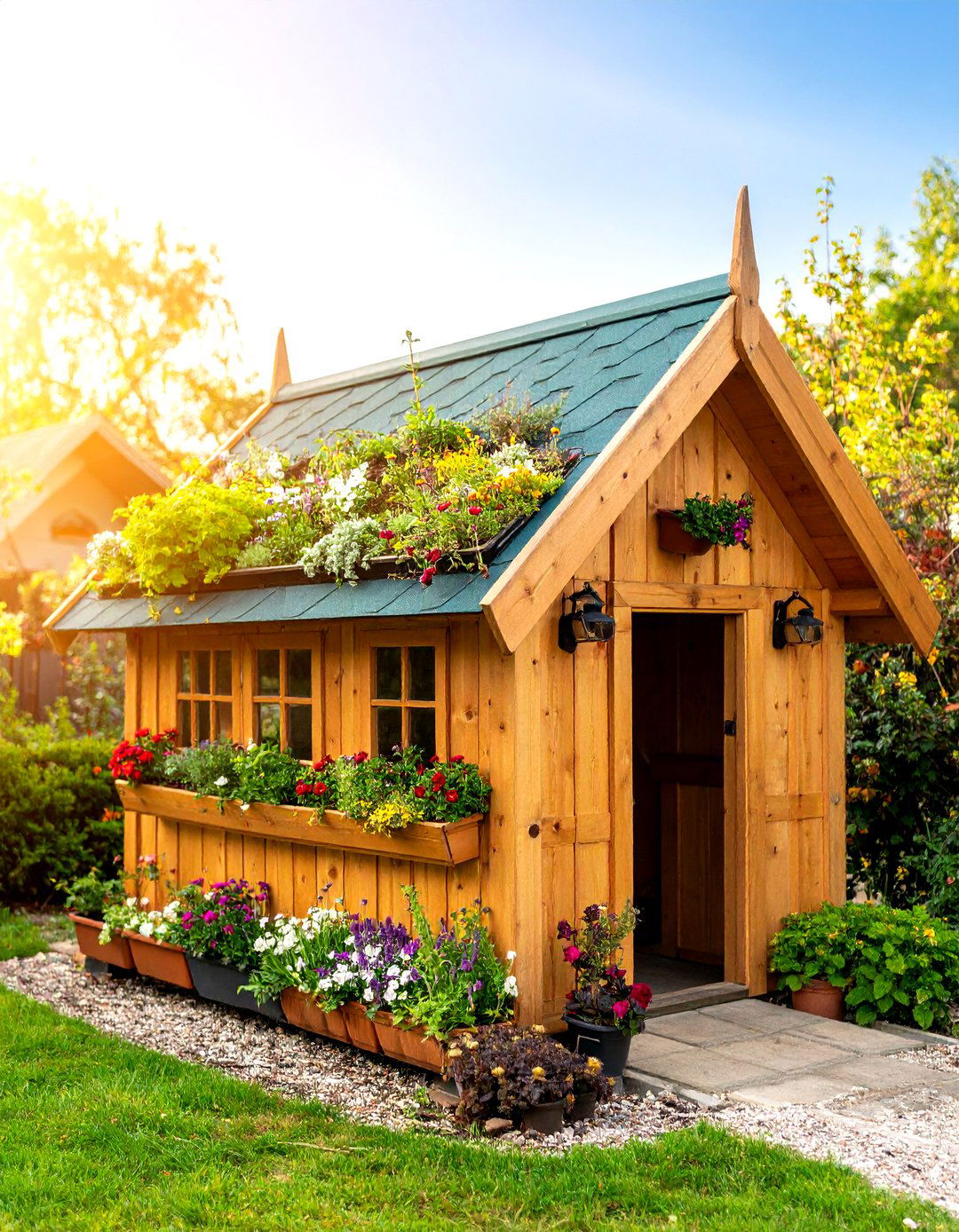
A shallow tray of compost and sedum atop EPDM rubber not only looks charming but lowers heat gain in summer and traps warmth in winter. Ensure roof pitch stays under 15° and reinforce rafters for the added load of wet soil. Gardeners with coop green roofs reported indoor temps 7 °F cooler on 90 °F days and noticed butterflies visiting the blooms. Hobby Farms
20. Combination Night Shelter and Daytime Run for Full-Time Security
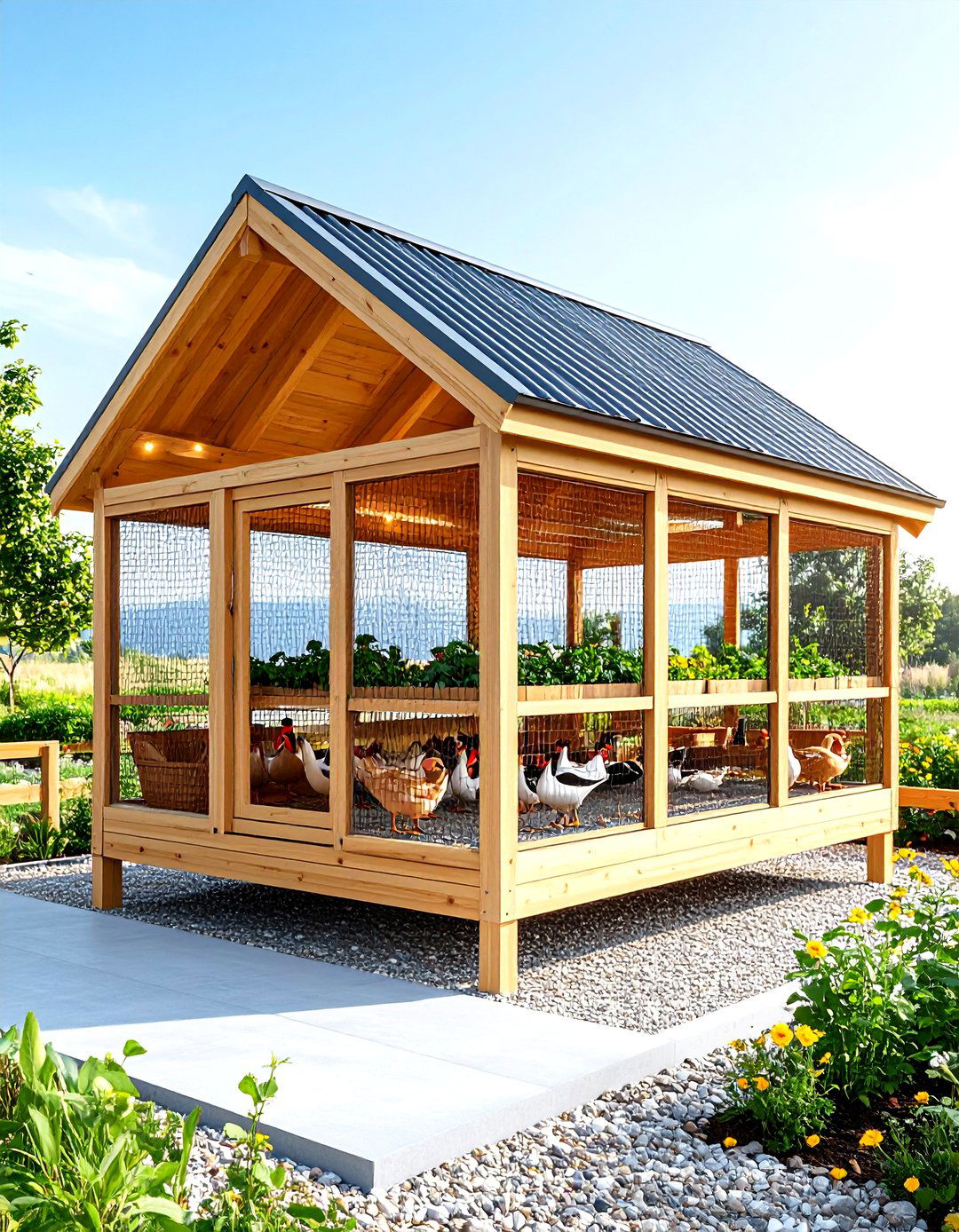
Enclose the duck house inside a ½-inch-mesh run with a solid roof so birds can wander safely even if you’re away late. Use 2 ft of buried hardware cloth or an outward predator skirt to block diggers, and frame the run tall enough—about 5 ft—for you to walk in. Owners following this “coop-in-run” concept report stress-free travel days because birds remain protected 24/7. Reddit
Conclusion:
A great duck house is less about fancy trim and more about smart sizing, dry bedding, fresh air, and tight security. Whether you float it, wheel it, berm it, or blanket it in straw, every design here honors those fundamentals while tailoring comfort to climate and budget. Pick one idea, adapt the measurements to your flock, and you’ll soon have quacks of approval echoing from a sturdy new home.



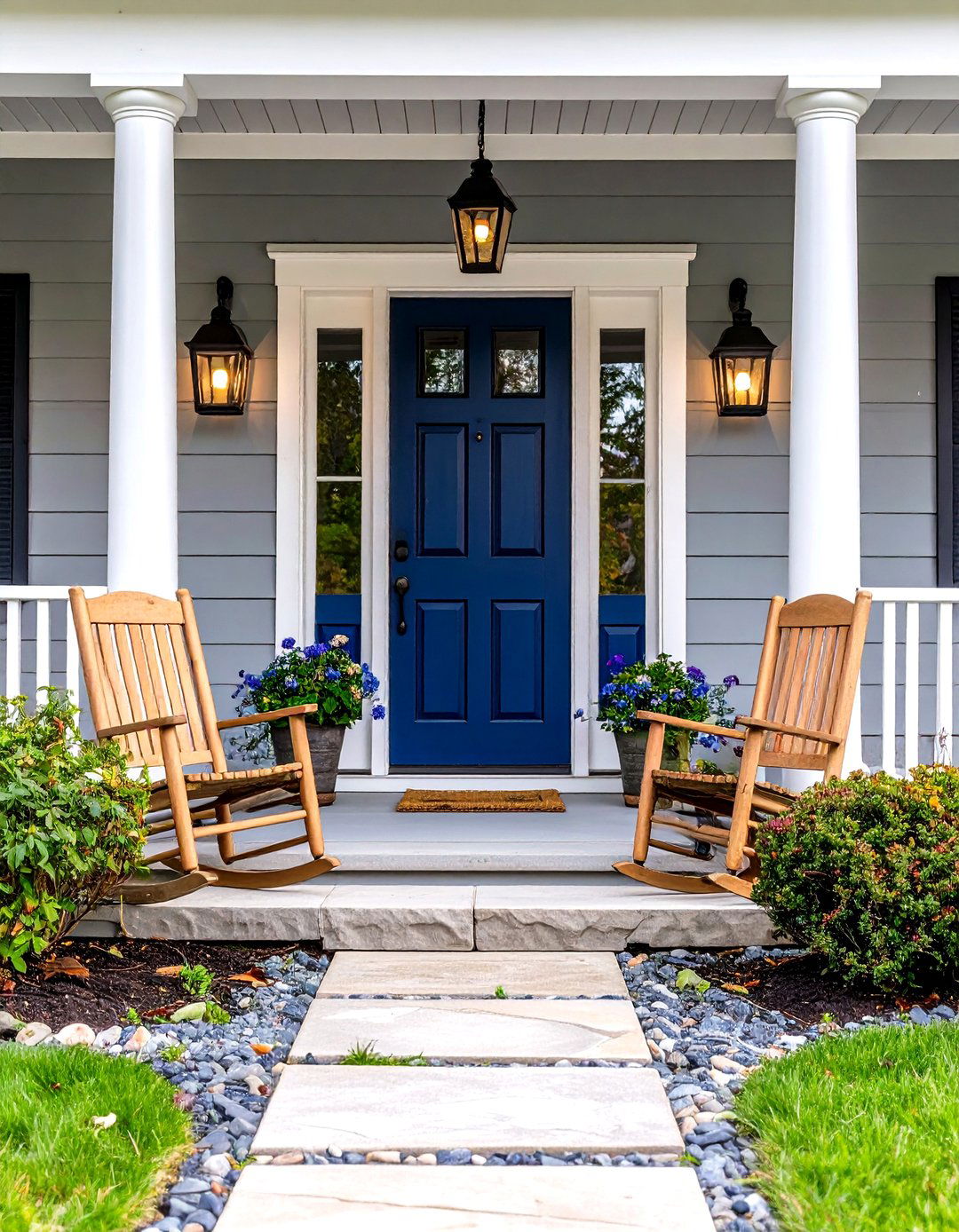

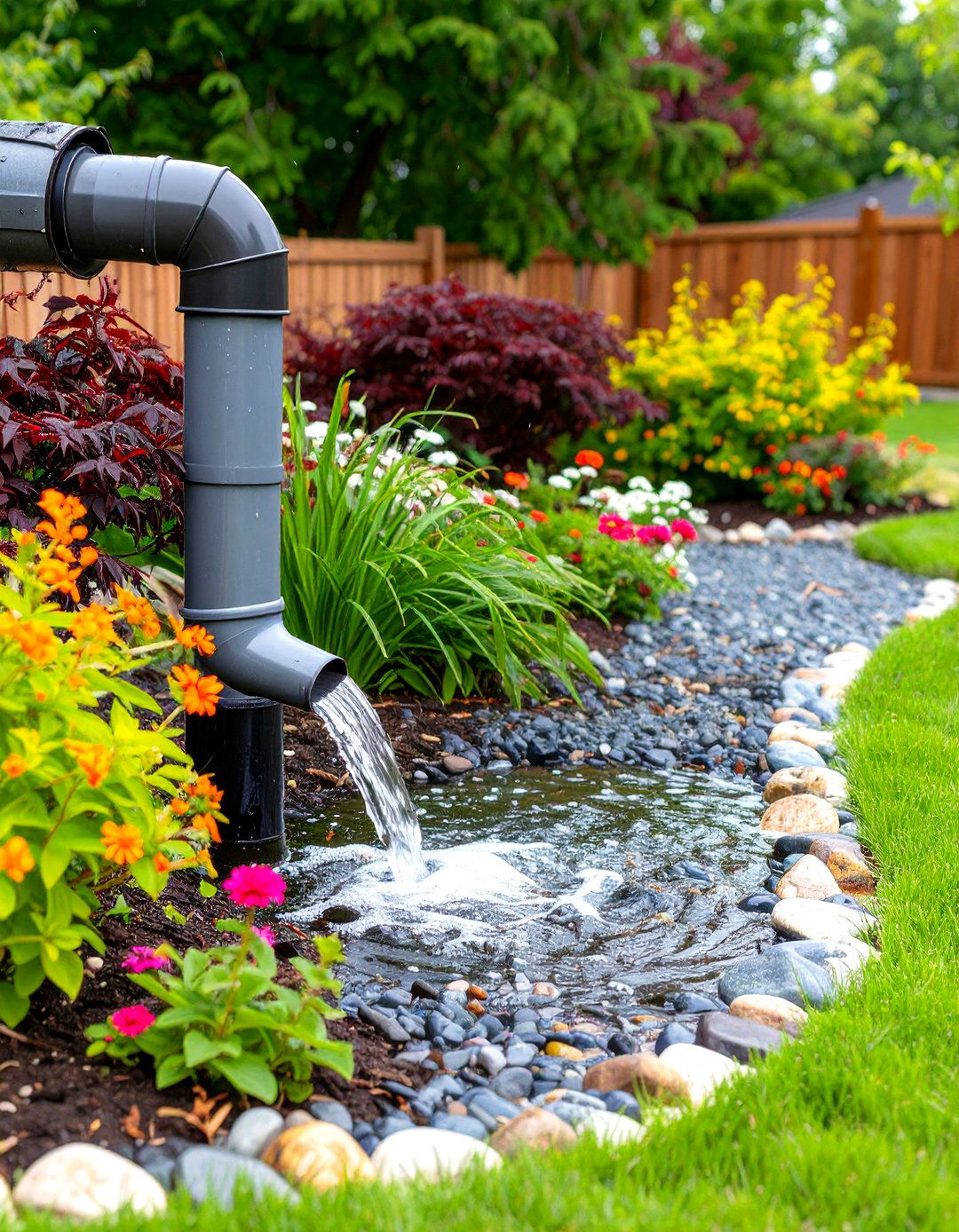
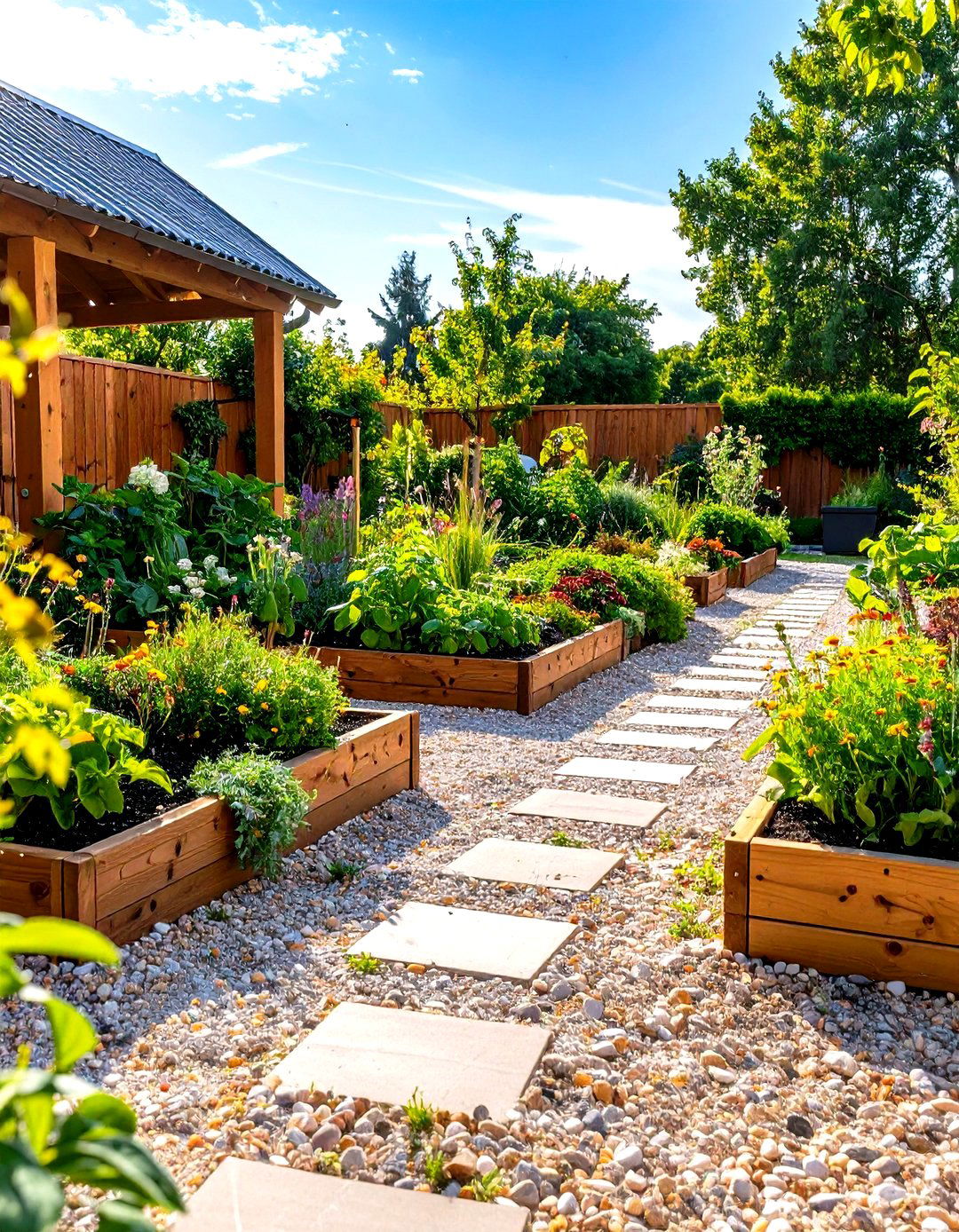

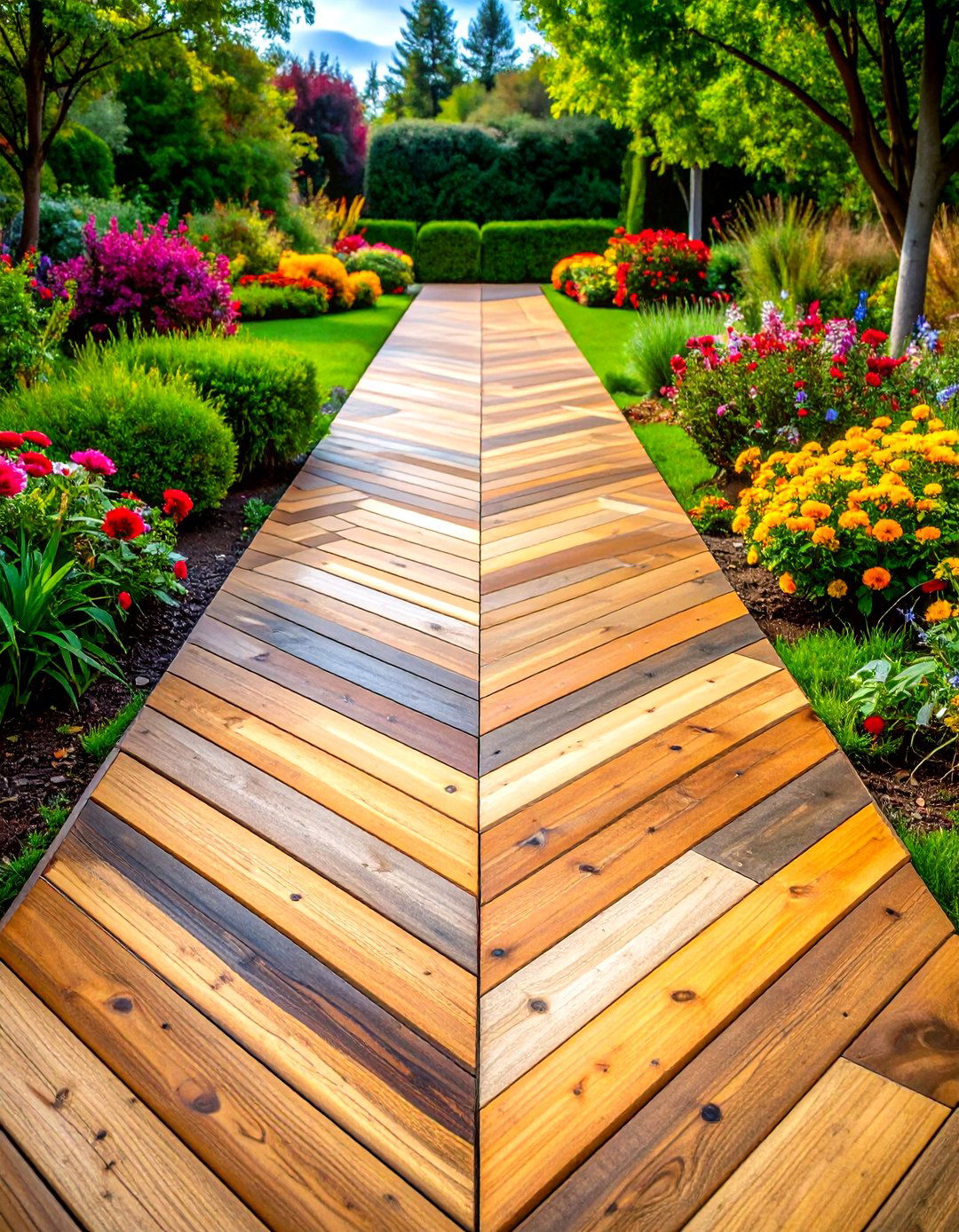


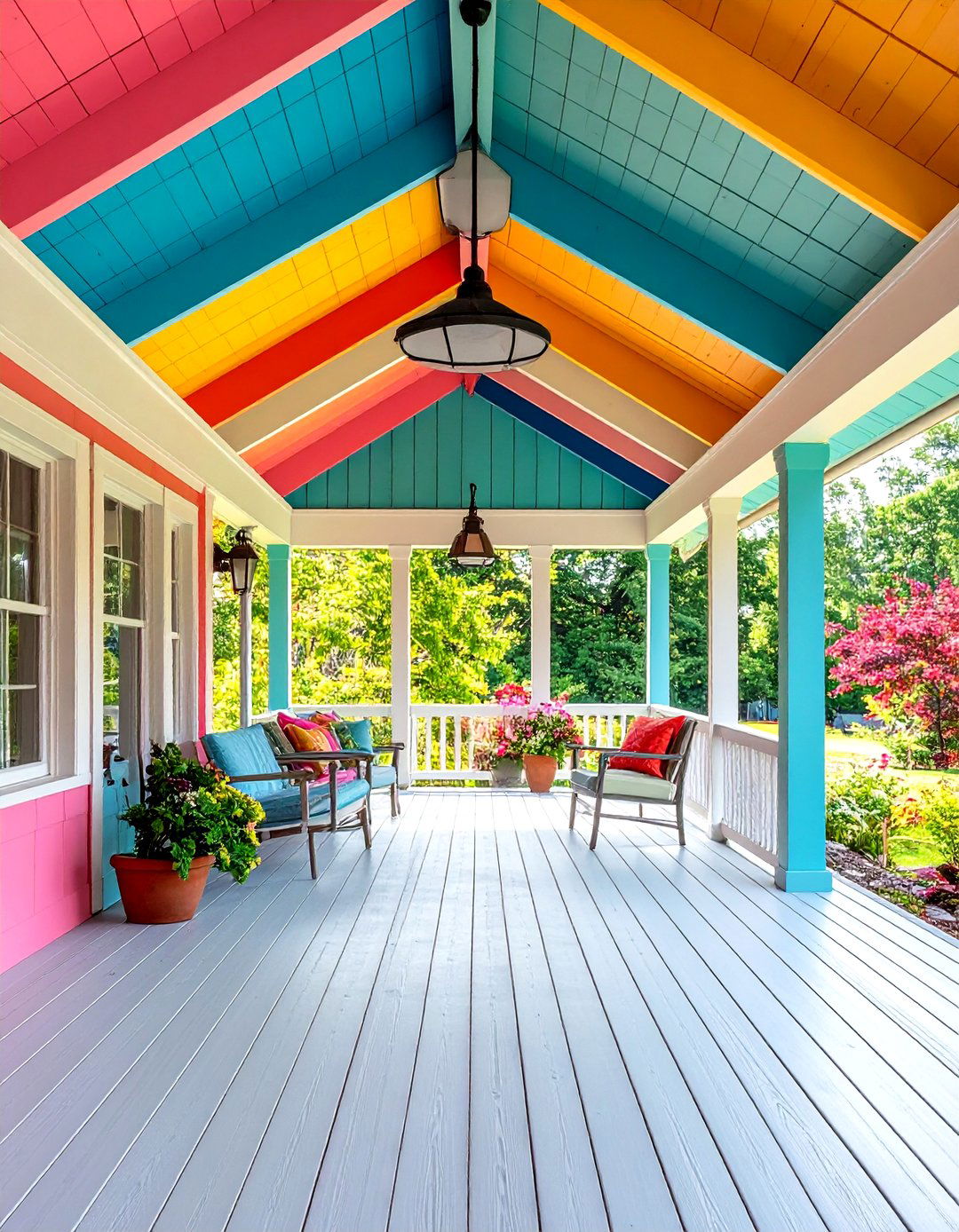
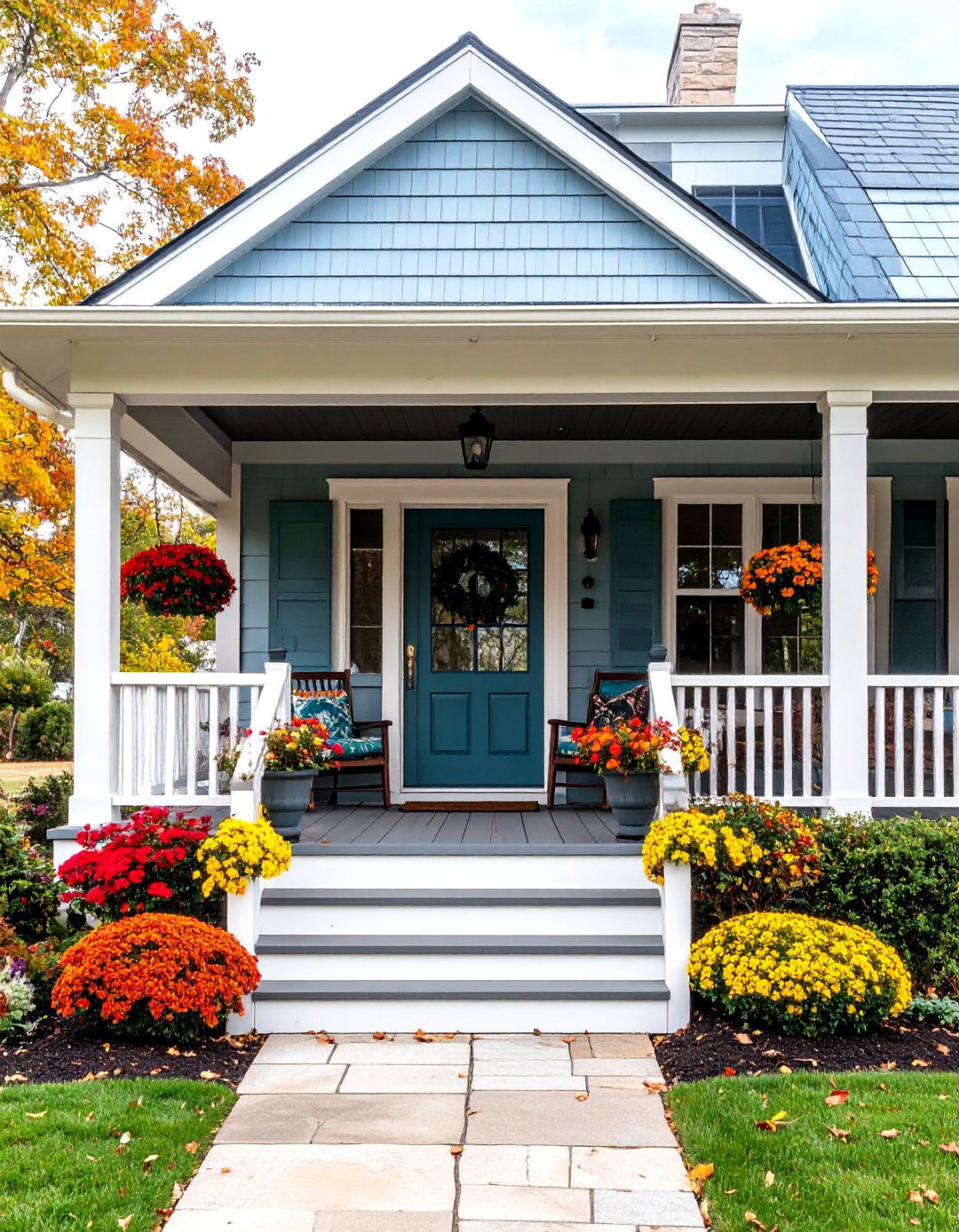
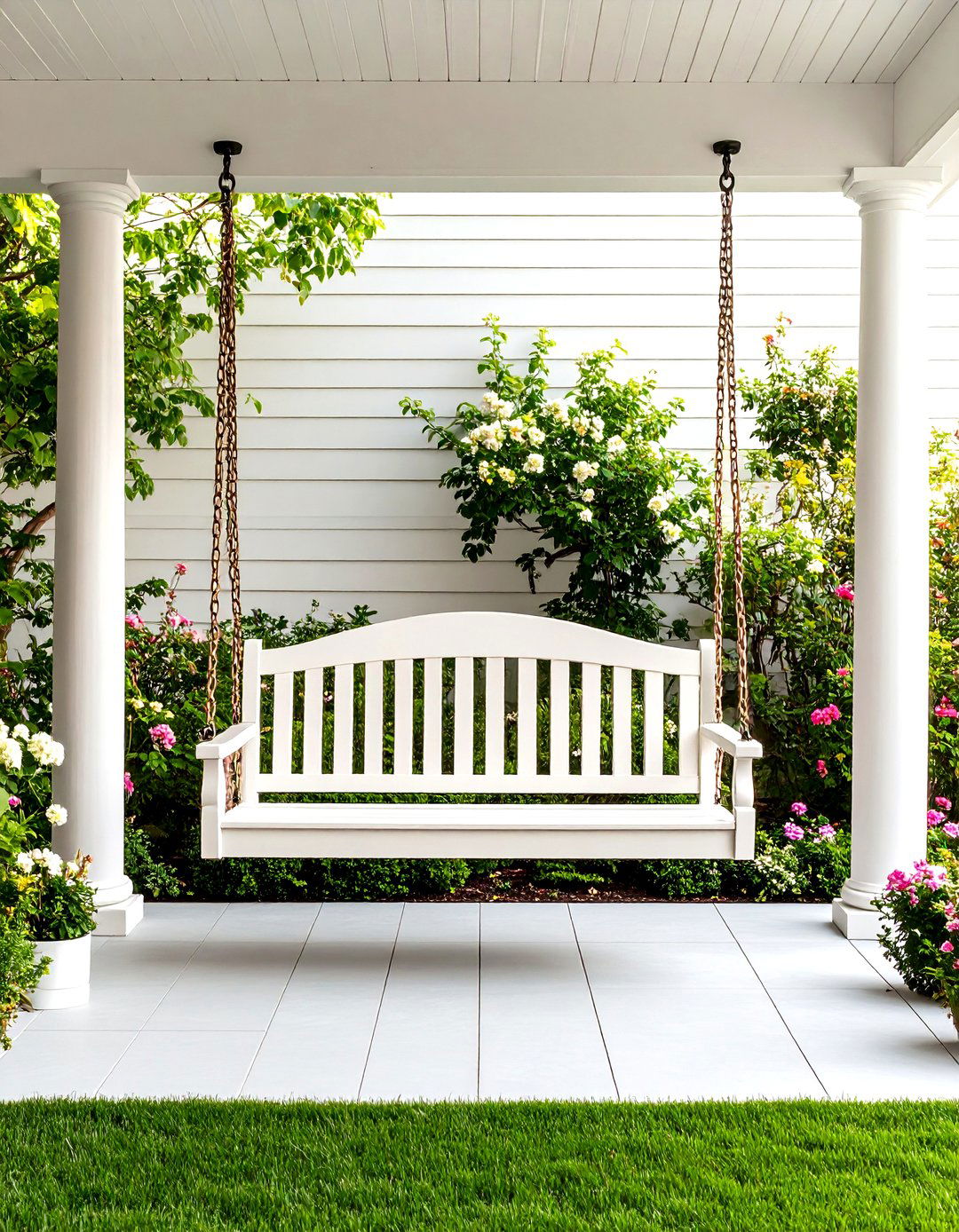
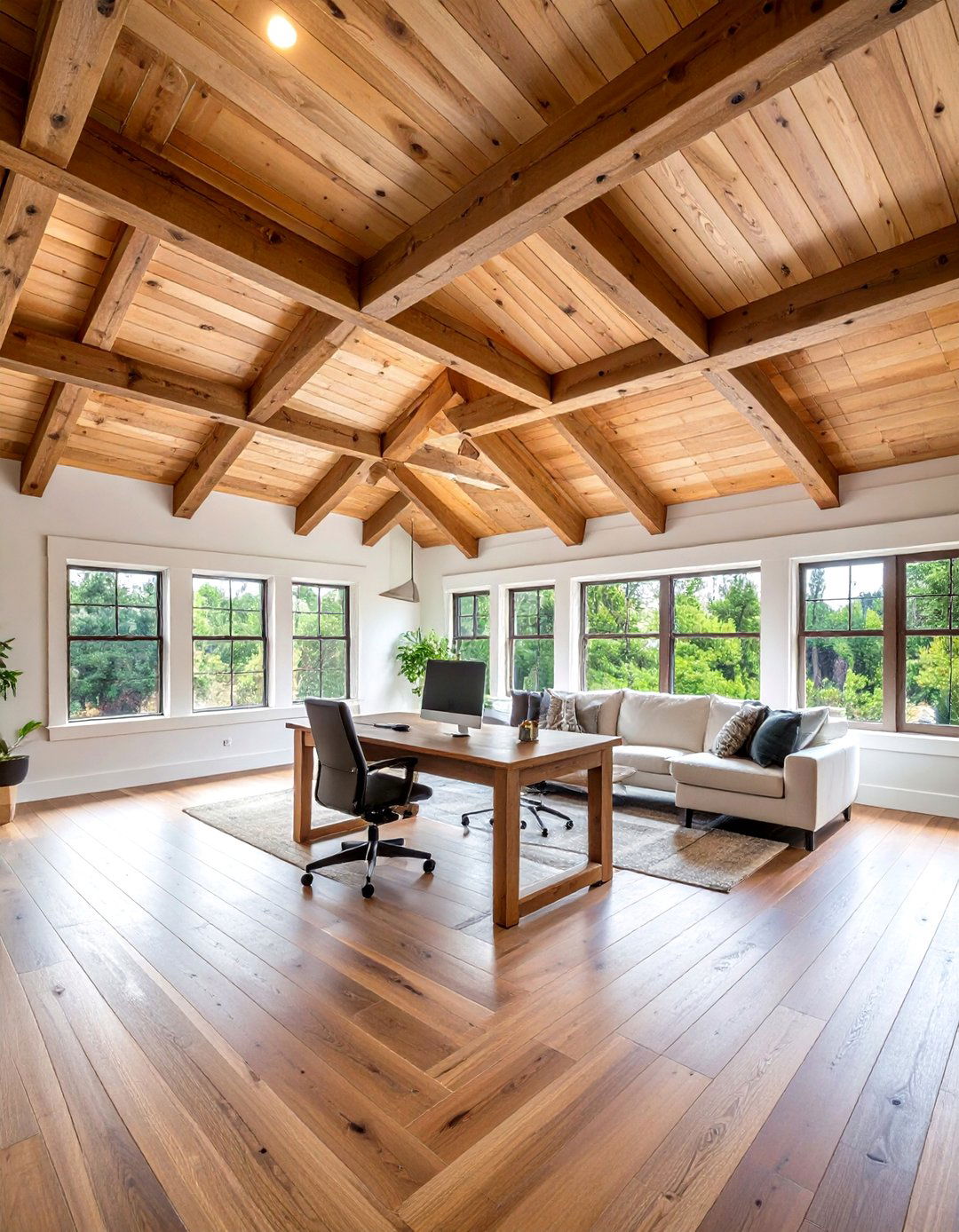
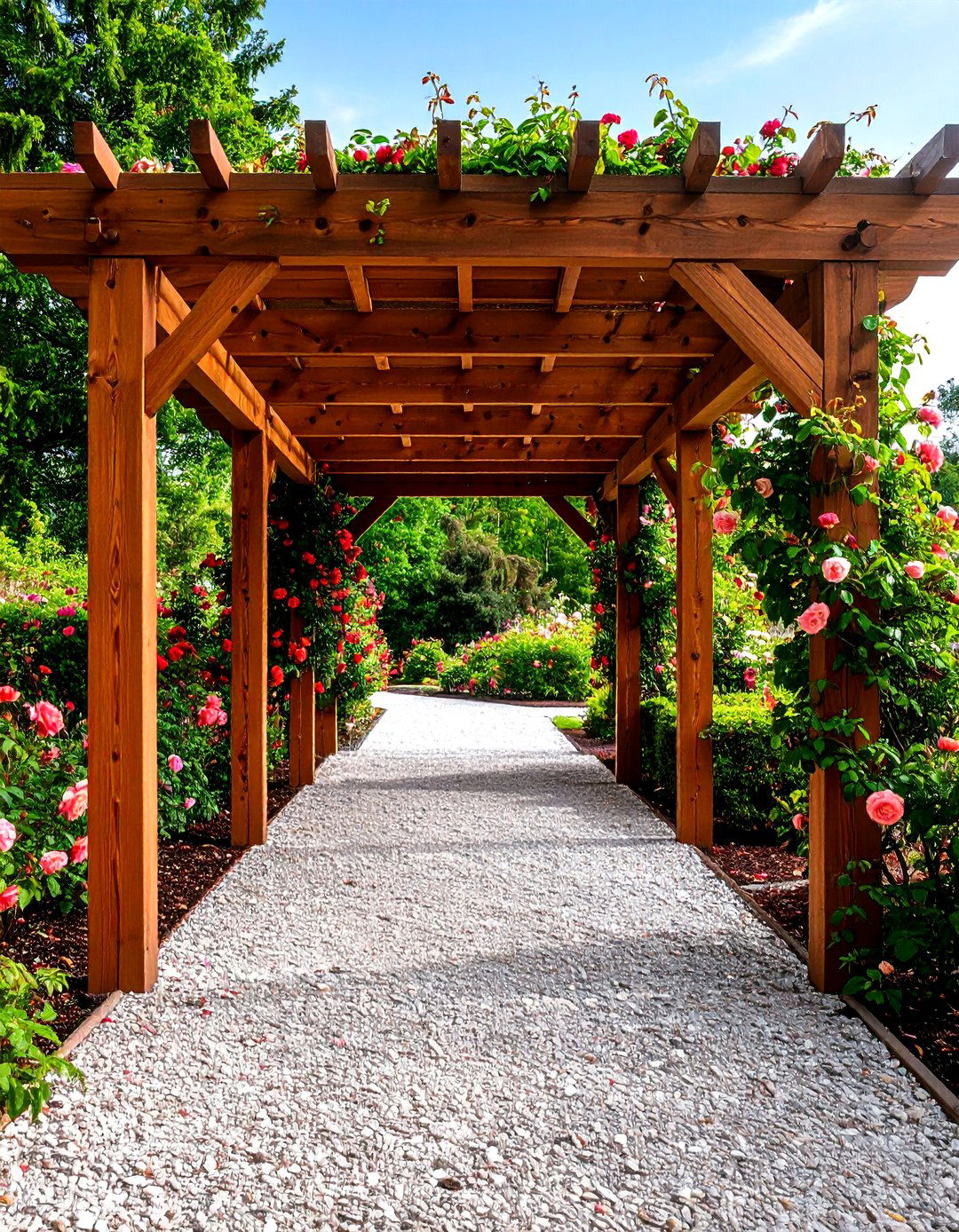
Leave a Reply